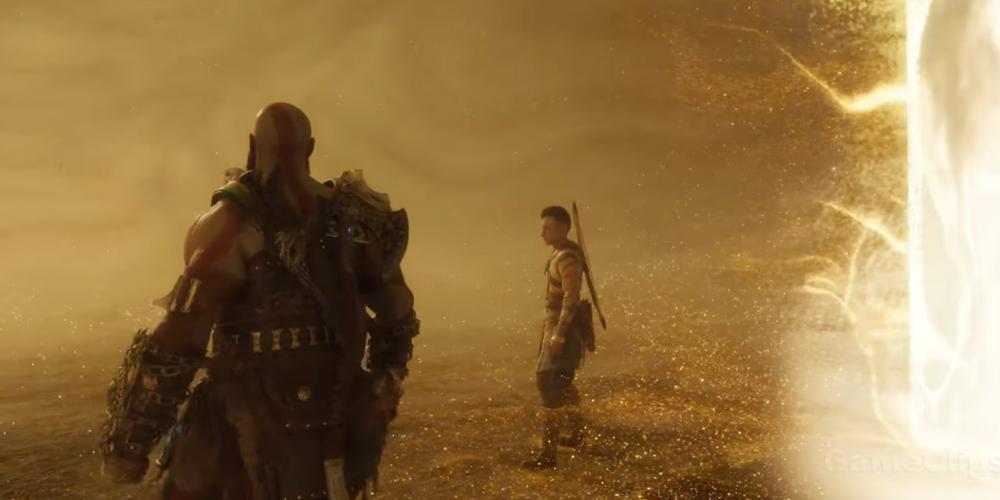Exploring the Mythological Realm: Key Locations and Their Inspirations in God of War Ragnarök
- 289

In the spectacular realm of video games, few titles have managed to weave mythology with gameplay as intricately as the God of War series. With its latest installment, God of War Ragnarök, the series not only continues its tradition of rich narrative-driven experiences but also introduces players to a plethora of mythological locations, each brimming with stories, challenges, and historical depth. This article will delve into the key settings of God of War Ragnarök, exploring their mythological inspirations and the intricate details that bring these fantastical worlds to life.
Svartalfheim
The realm of Svartalfheim, home to the enigmatic dwarves, is a centerpiece in many tales within Norse mythology. In God of War Ragnarök, this location is depicted with a unique blend of technological prowess and looming, rugged landscapes. The environment in the game mirrors the traditional depiction of Svartalfheim as a place of underground complexity and forge, aligning with the dwarves' reputation as master craftsmen and metalworkers in mythological tales.
One of the most stunning interpretations in the game is the realm’s adaptive infrastructure, which includes massive, intricate machinery and forge areas that highlight the dwarves' skills. This dynamic setting not only provides a challenging landscape for the players but also deeply immerses them in the mythical essence of Norse legends, illustrating a civilization that is both technologically advanced yet closely tied to their ancient roots.
Midgard

Known as the realm of humans, Midgard is central to both Norse mythology and the God of War series. In Ragnarök, Midgard is portrayed enduring a harsh, unending winter known as Fimbulwinter, which precedes the apocalypse—Ragnarök. This portrayal is deeply rooted in legendary accounts where Fimbulwinter leads directly to the end of the world.
The game enhances the folklore by integrating survival elements into gameplay, reflecting the brutal conditions the characters must endure. From snow-laden forests to frozen lakes, the landscapes present not only visual splendor but are a testament to the game developers’ commitment to embodying mythological authenticity, challenging the player to navigate and survive in a relentless Nordic winter.
Alfheim
Lush, vibrant, and enigmatic, Alfheim is the land of the Light Elves, an ethereal race distinct in Norse mythology. In God of War Ragnarök, Alfheim is portrayed with a surreal quality, boasting radiant landscapes and a pervasive sense of magic. This realm's depiction is consistent with mythological descriptions where Alfheim is considered one of the most beautiful locations in the Norse cosmos.

The game designers have carefully layered Alfheim with a palette of vivid colors, expansive lightscapes, and a feeling of perpetual dawn. The realm's inhabitants reflect an unparalleled beauty and grace, expected of beings who are said to be luminous and pure-hearted. In integrating these elements, the game achieves a harmonious balance between combat challenges and an aesthetic delight, enabling players to engage with a world that transcends ordinary perceptions.
Jotunheim
In Norse mythology, Jotunheim is the realm of the giants, beings imbued with strength and elemental powers. God of War Ragnarök's representation of Jotunheim is grounded in these mythic elements, presenting a landscape that is rugged and primordial. The terrain is dominated by vast mountains, deep fjords, and dense, mist-covered forests that create a sense of ancient, untouched wilderness.
The game effectively contrasts the might of the giants with their natural surroundings, representing their formidable and elemental nature. Through its careful delineation of Jotunheim, the game not only pays homage to the mythical narratives but also challenges the player to navigate a world where scale and power are visually communicated through the omnipresent raw beauty of nature.
Vanaheim

Vanaheim, the realm of the Vanir gods, known for their connection to nature, fertility, and magic, is brought to life through verdant landscapes and mystical ambiance in God of War Ragnarök. The portrayal of Vanaheim takes inspiration directly from the mythical accounts that emphasize the Vanir's profound relationship with the natural world.
In the game, Vanaheim is distinguished by its lush, dense forestry and vibrant ecosystems, drawing the player into a deeply connected and alive world. Interactive elements within the realm, such as rare flora and magical creatures, echo the Vanir's lore attributes, emphasizing their mastery over magic and the natural order. This integration not only serves the narrative’s progression but enriches the player's experience with surprises and exploration trophies linked directly to the mythological themes of Vanaheim.
Conclusion
God of War Ragnarök masterfully transforms ancient myths into a compelling interactive journey, delving deep into Norse mythology to inform and enhance each location's presentation and impact. The game’s developers have taken considerable care to not only craft beautiful, immersive worlds but also to embed subtle cultural and mythological references that enrich the player's understanding and appreciation of the ancient tales that inspire the settings. Through this exploration, God of War Ragnarök becomes more than a game; it is an odyssey through time, myth, and the raw elements of storytelling.